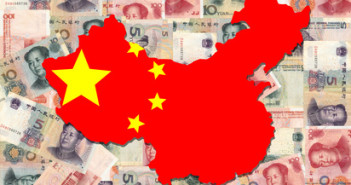China, the world’s second largest economy, reported an annual growth rate of 7.6% in Q2, within expectations. This is slower than 8.1% in Q1 and the slowest in 3 years, but within the government’s targets and still very rapid for such a big economy at a time when major markets are grinding to a halt.
There very well reasoned were fears that the result would be worse, so AUD/USD reacted positively. However here are 8 doubts about this growth rate.
Aussie/dollar is now trading at around 1..0170. It fell as low as 1.0100 yesterday, and traded just above 1.0120 before the publication. China is Australia’s main trade partner, and Chinese imports of commodities are critical for the Australian economy. See the AUDUSD forecast more.
Why were there doubts about Chinese growth and the reliability of the data?
- Timing: The data is released only around two weeks after the quarter ends.
- Past Doubts: In the past, there was talk that Chinese GDP numbers are “all made upâ€, or at least smoothed: lowered in the good years and raised in the bad ones.
- Electricity consumption indicates much slower growth.
- Manufacturing contracting: The independent HSBC/Markit Manufacturing PMI points to contraction for many months
- Interest rates: China cut interest rates twice in a matter of weeks, indicating a worsening situation
- Housing prices are on the fall in most Chinese cities.
- Local consumption isn’t growing – this was supposed to gradually take a larger share of economic activity, replacing manufacturing.
- Inflation is falling rapidly – from a situation of overheating, China is seeing prices drop across the board, including food, but not only food. Strong growth doesn’t go well with falling prices.
8 is considered a lucky number in China.
China also reported a rise of 9.5% in industrial output (year over year) and a jump of 20.4% in fixed asset investment so far this year (annualized). According to all these numbers, China isn’t suffering any kind of landing.
Do you believe these numbers?
Further reading: US Gained Only 12K Jobs in May According to Bernanke’s Highlighted Indicator



